Ladolemono (Greek Lemon Olive Oil Sauce)
Jul 12, 2024, Updated Aug 27, 2025
This post may contain affiliate links.
Ladolemono, a vibrant Greek lemon olive oil sauce, shows you the true flavor of Greece! This zesty dressing, with its bright flavors of fresh lemon juice and rich olive oil adds a Mediterranean touch to your dishes.
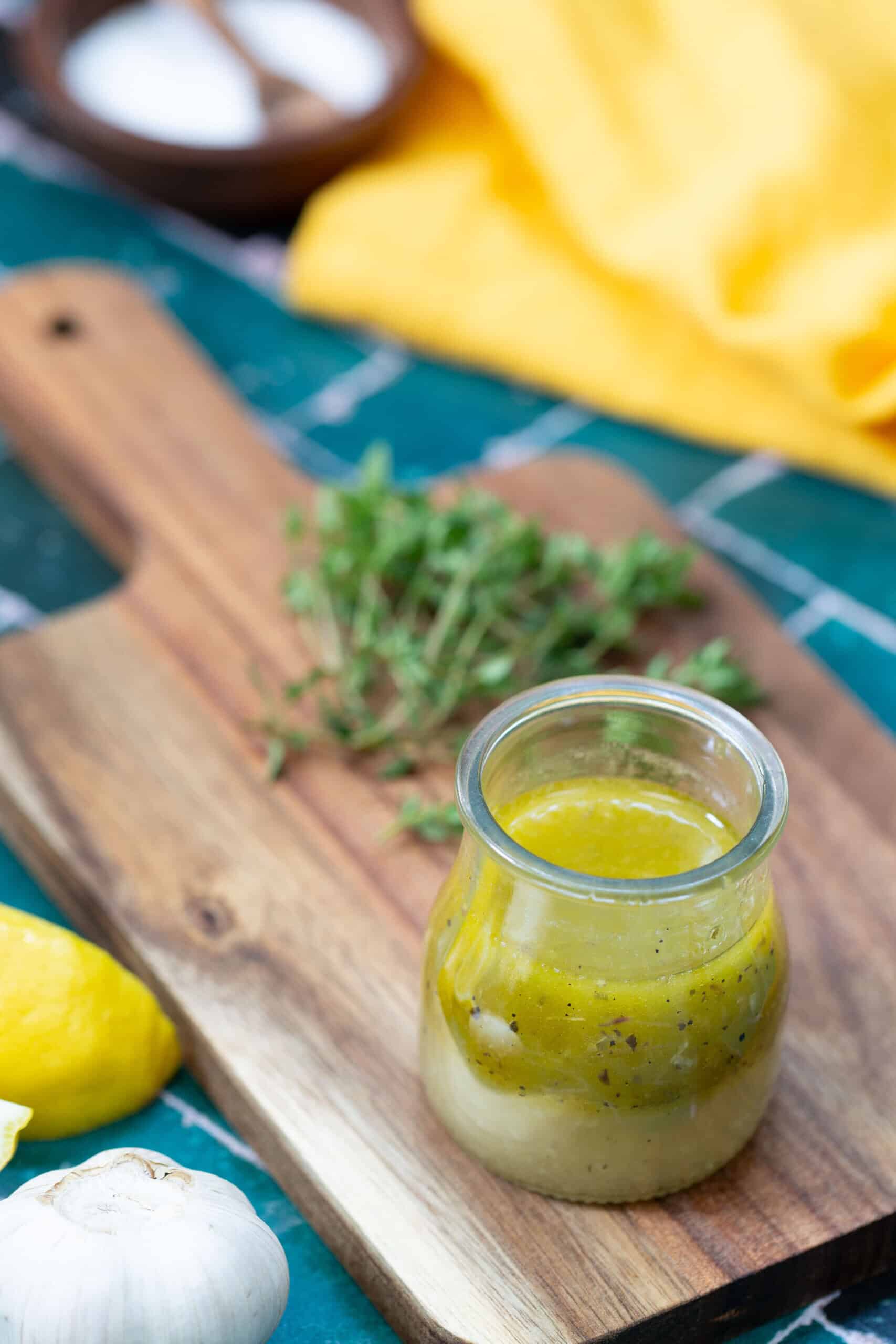
Greek food is always fresh and flavorful. From Greek salad and Greek roasted potatoes to fasolakia and spanakorizo, every dish is made with fresh and wholesome ingredients, which we love over here! Today we are diving into basics with a quick tutorial on how to make Greek lemon sauce: Ladolemono!
Whether drizzled over salads, used as a marinade for meats, or as a finishing touch to grilled vegetables and fish, this versatile sauce will elevate your meals with its refreshing and tangy taste. Just like my zesty lemon vinaigrette and Mediterranean salad dressing, this recipe comes together in no time and keeps well in the fridge!
Table of Contents
What is Ladolemono?
Ladolemono, derived from the Greek words “ladi” (oil) and “lemoni” (lemon), is a quintessential Greek lemon and oil sauce which is traditionally used as a dressing for grilled meats, seafood, and vegetables.
In Greek cuisine, this versatile sauce is not just a dressing but also a popular marinade. The combination of lemon juice and olive oil helps tenderize meats while infusing them with a refreshing citrusy flavor. Also, the addition of garlic and oregano enhances its flavor, making it a staple in Greek households.
Ladolemono’s is unique because of its simplicity and adaptability. Its bright, zesty taste can elevate a simple salad, bring out the best in grilled fish, or serve as a delectable dip for bread.
Ingredients
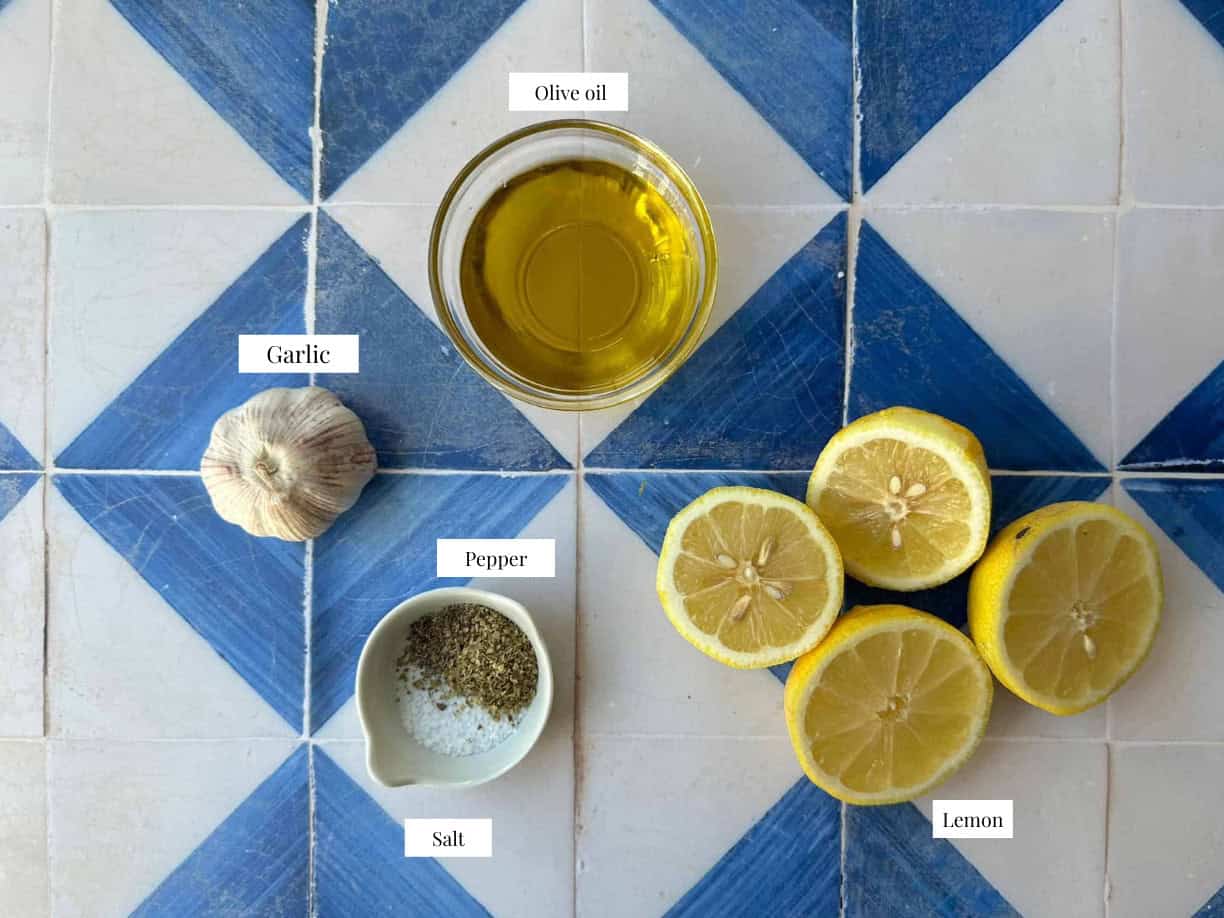
- Lemon Juice: Freshly squeezed lemon juice works best for a classic ladolemono.
- Olive Oil: Use extra virgin olive oil for its rich, fruity taste and smooth texture.
- Salt and pepper: Kosher salt and freshly ground pepper would be best.
- Garlic: Grating the garlic rather than mincing it ensures a smoother texture and even distribution throughout the sauce. Don’t use garlic powder in place of fresh, it will alter the flavor dramatically.
- Oregano: Dried or fresh, providing an earthy, aromatic note.
How to Make Ladolemono
Add olive oil, lemon juice, pepper, salt, garlic, and oregano to a jar. You can also add to a bowl but a jar is preferred.
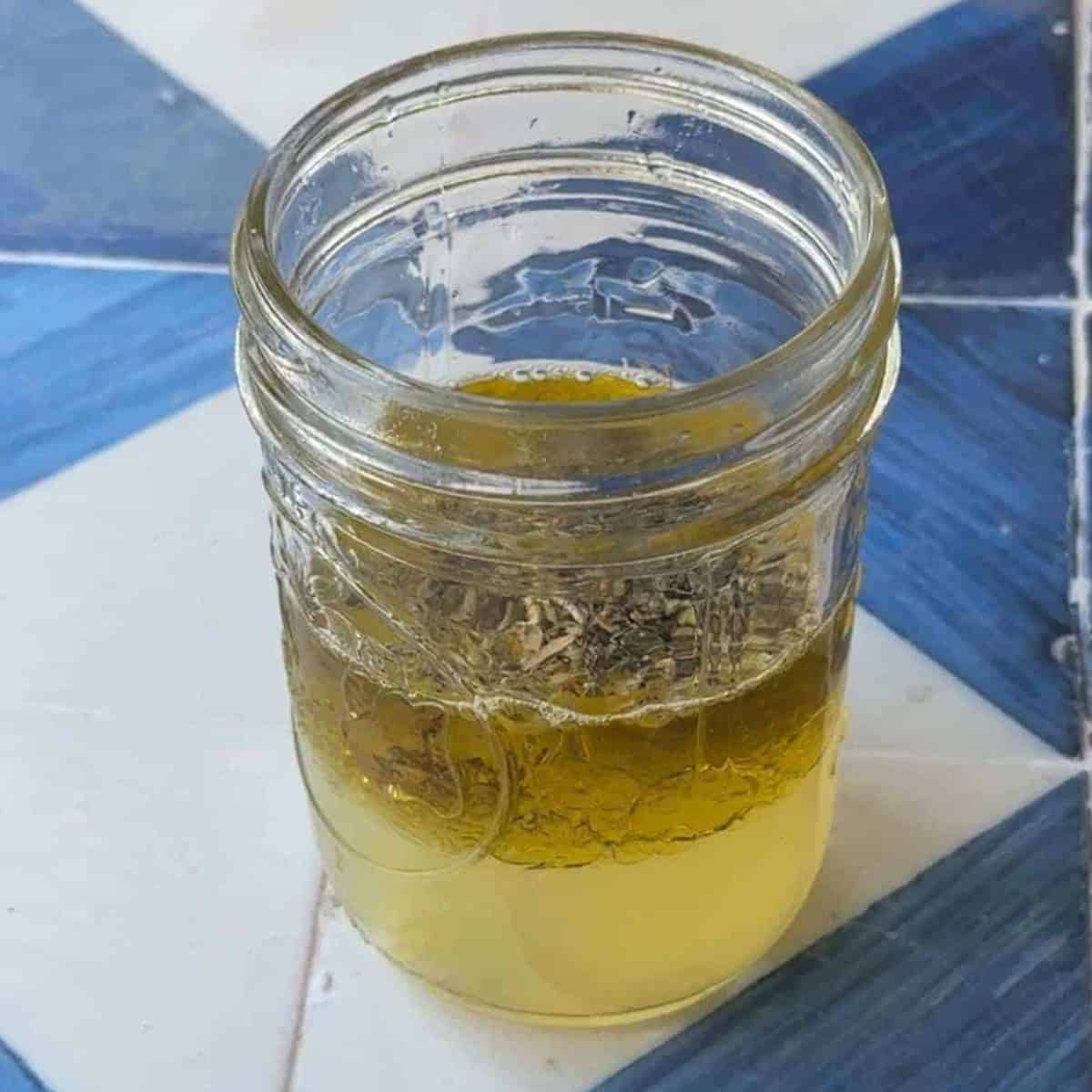
Mix the ingredients by shaking the jar. This is my recommended method for combining ingredients.
You can also mix in a bowl or blend with a hand blender. If you’re using a hand blender, don’t blend longer than a few seconds because olive oil might get bitter.
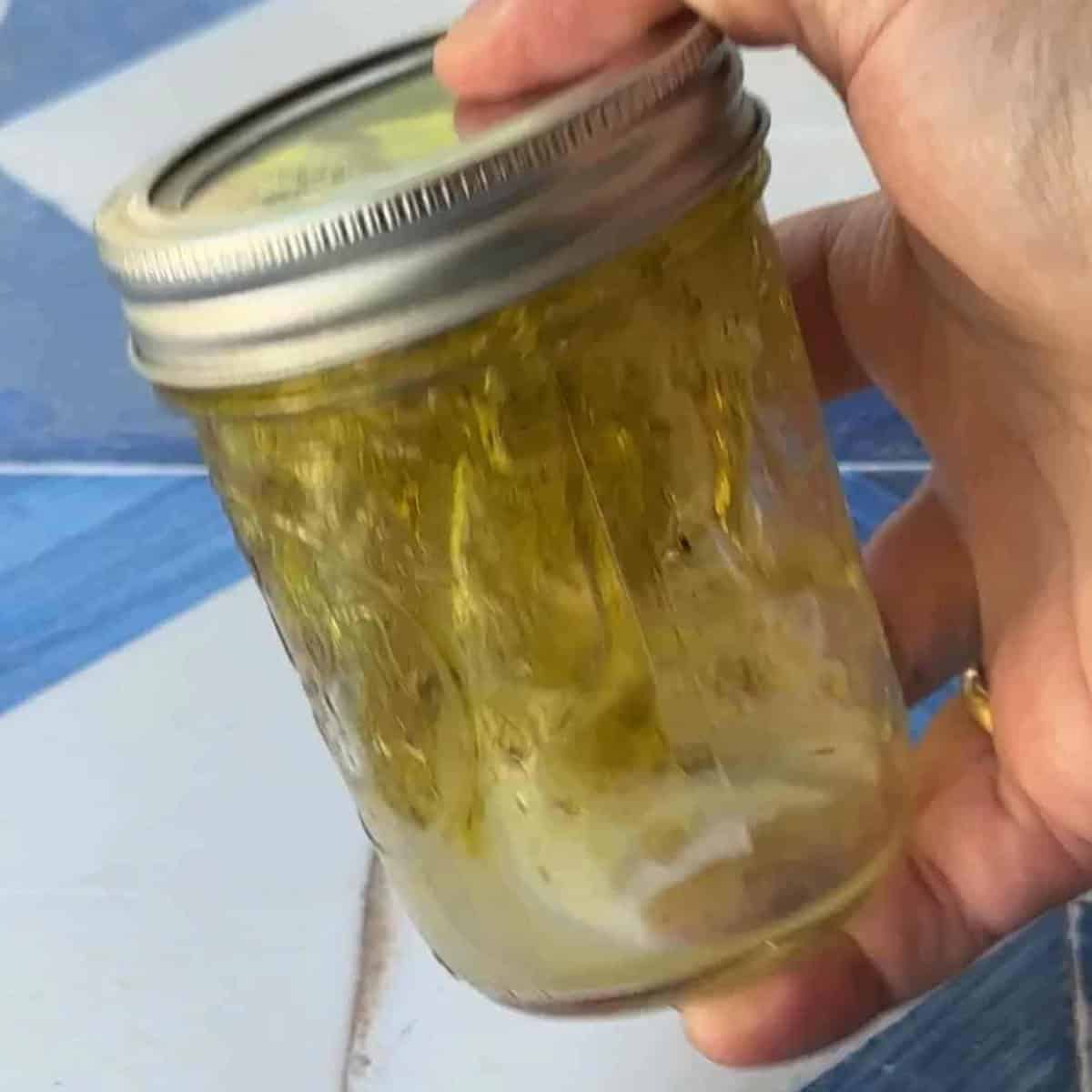
Pour into serving glass or right onto dressing or protein, depending on how you’re choosing to serve it.
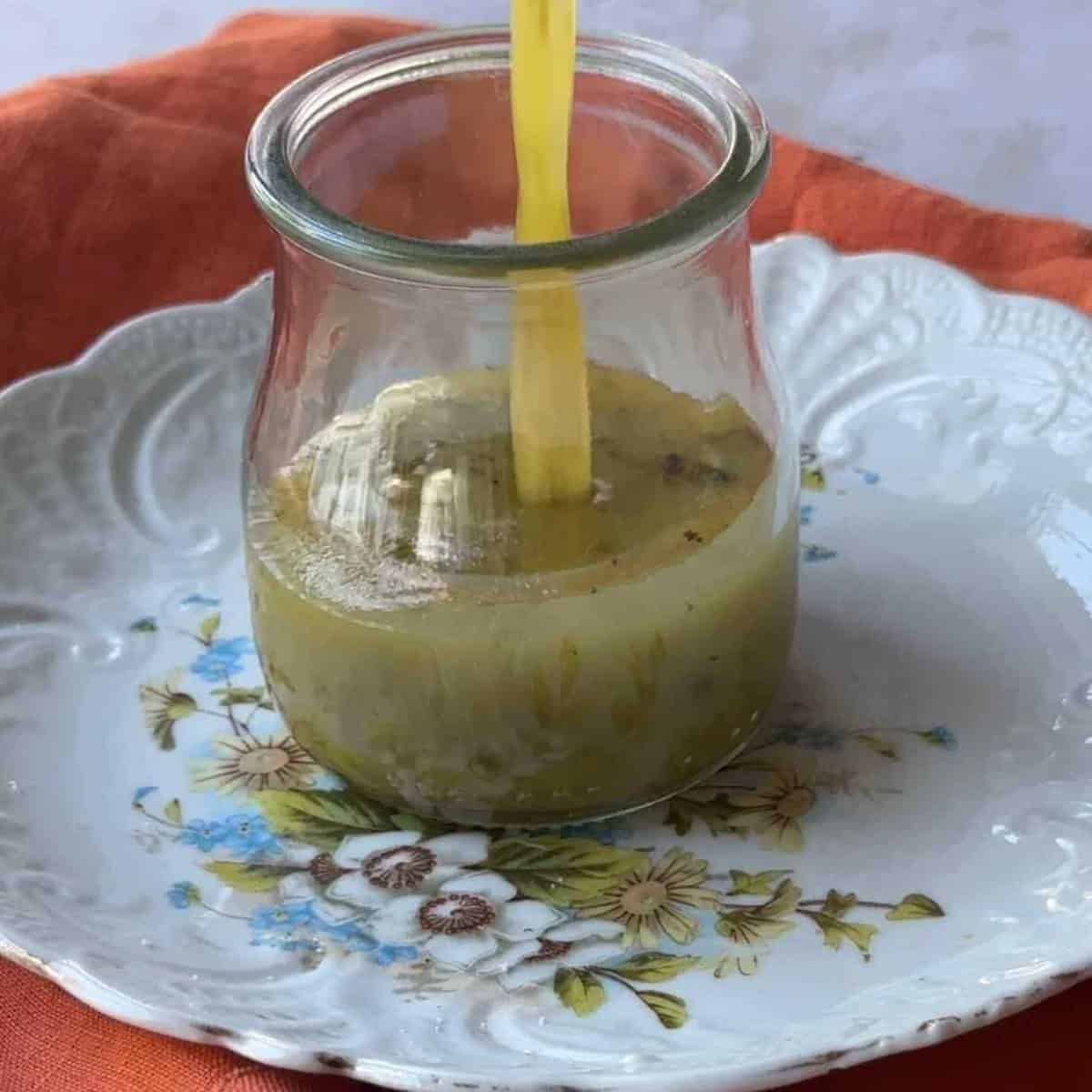
How To Use Ladolemono
I love serving this over a delicious array of vegetables to make a salad, however, this sauce is so versatile and can be used in numerous ways.
You can use it as a marinade and it’s often used a finishing sauce when cooking proteins or vegetables. This Greek lemon sauce can also be served as bread dip.
Here are a few recipes where adding ladolemono would work wonderfully:

Storage
To store your Ladolemono, transfer the sauce to an airtight container or a glass jar with a tight-fitting lid.
Refrigerate for up to 5 days. Before using, give it a good shake or whisk to re-emulsify the ingredients, as they may separate over time.
If you notice any change in color, smell, or texture, it’s best to make a fresh batch.
Frequently Asked Questions
Yes, Ladolemono makes an excellent marinade for chicken, fish, and vegetables. The acidity of the lemon juice helps to tenderize the meat, while the olive oil and herbs add flavor.
Ladolemono can be used as a salad dressing, a drizzle over grilled or roasted vegetables, a topping for grain bowls, or even as a dip for bread.
It’s not recommended to freeze Ladolemono because the texture may change upon thawing. It’s best to make it fresh or store it in the refrigerator for up to one week.
More Greek Recipes To Try
Mediterranean recipes
Easy Greek Pastitsio Recipe
Greek Recipes
Greek Eggplant Moussaka Recipe
Greek Recipes
Soutzoukakia: Greek Baked Meatballs Recipe
Greek Recipes
Saganaki Recipe(Greek Fried Cheese)
Did you make this recipe? I’d love to hear about it! Please comment and leave a 5-star🌟 rating below. You can also follow us on Instagram, Facebook, Pinterest or subscribe to our newsletter to get a free e-Cookbook!

Ladolemono (Greek Lemon Oil Sauce)
Ingredients
- ⅓ cup Lemon juice
- ½ cup Olive oil
- ¼ tsp Salt
- ¼ tsp Black pepper
- 1 clove Garlic, grated
- 1 tsp Oregano
Instructions
- Place the lemon juice, olive oil, salt, pepper, garlic and oregano in a jar.
- Seal the lid, and shake the jar for about a minute until all is well combined.
- Store in the fridge for up to 5 days.
Video
Notes
Nutrition
Nutrition information is automatically calculated, so should only be used as an approximation.
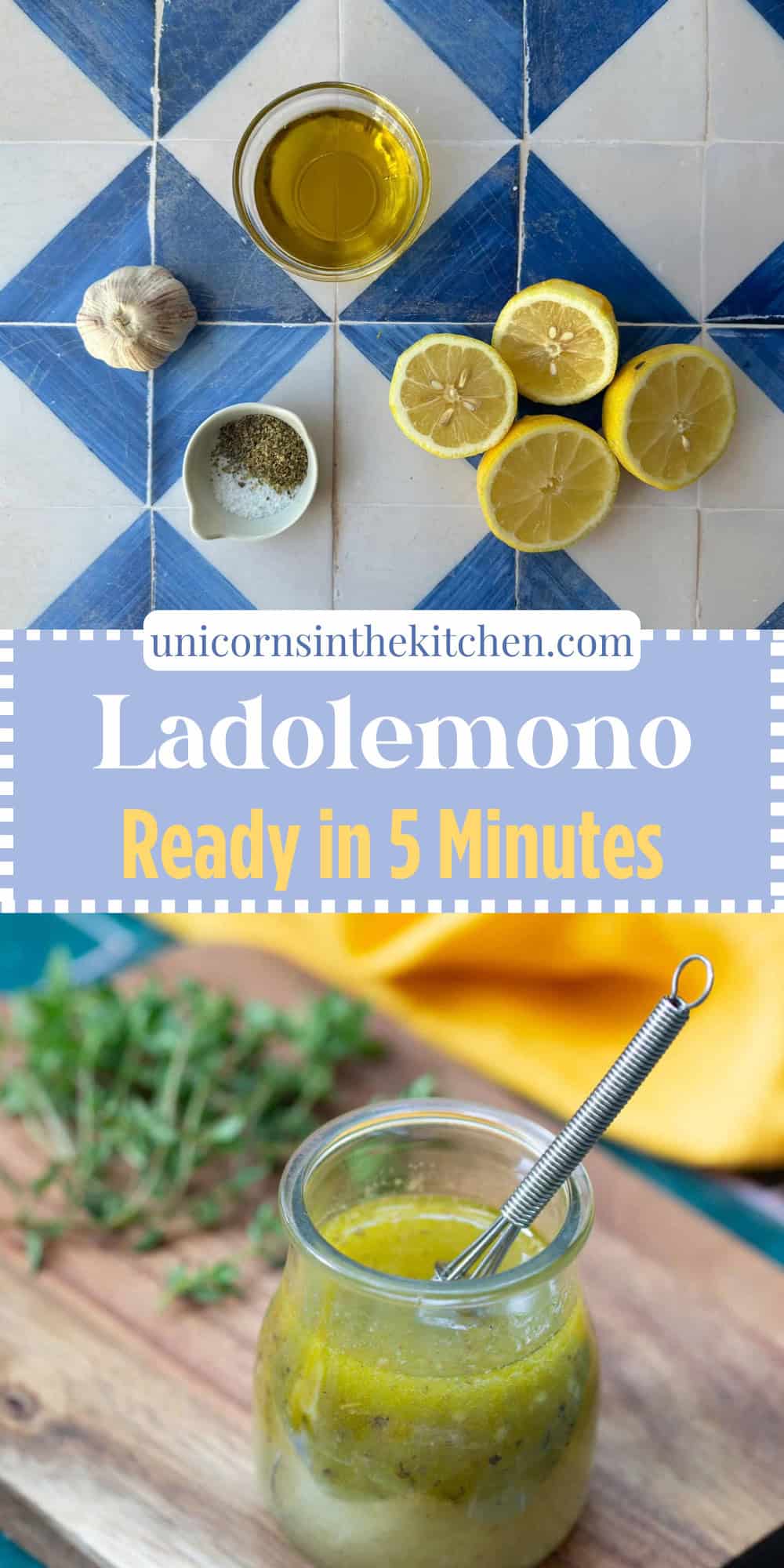
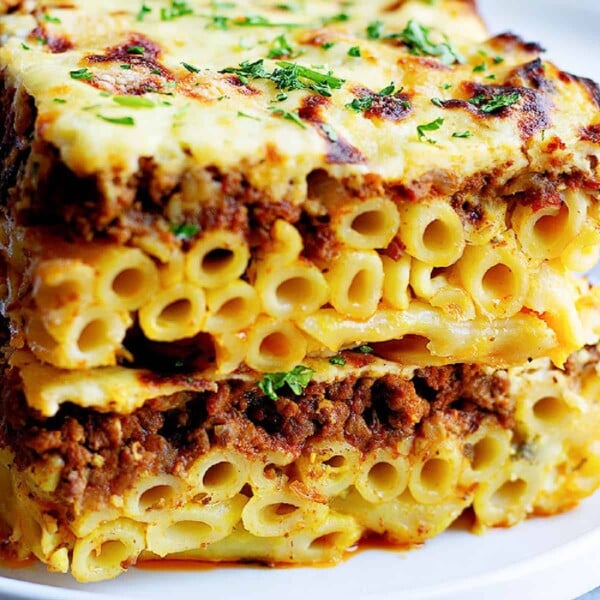
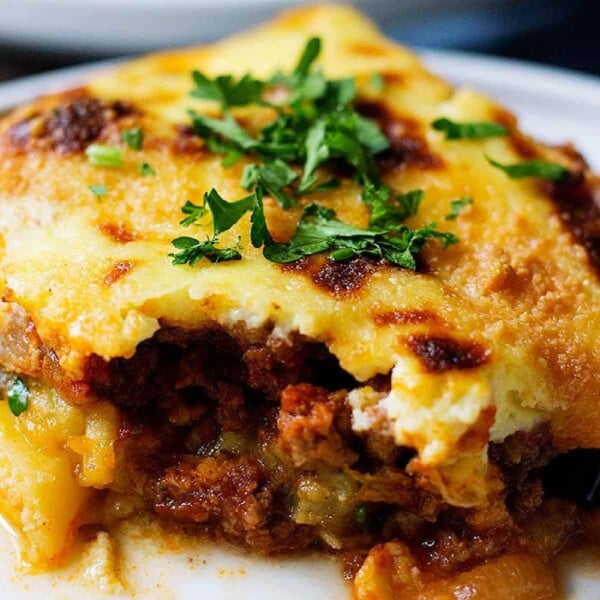











Loved this lemon oil sauce over our cucumber salads this week!
This sauce is so flavorful. Love the ingredients used. Thanks for sharing.
Perfect! I love this recipe! I
This sauce is so good! I drizzle it over everything. Love the light and fresh flavors.
Wow…this simple yet delightful. I love tangy salad dressing recipes and this is so flavorful…